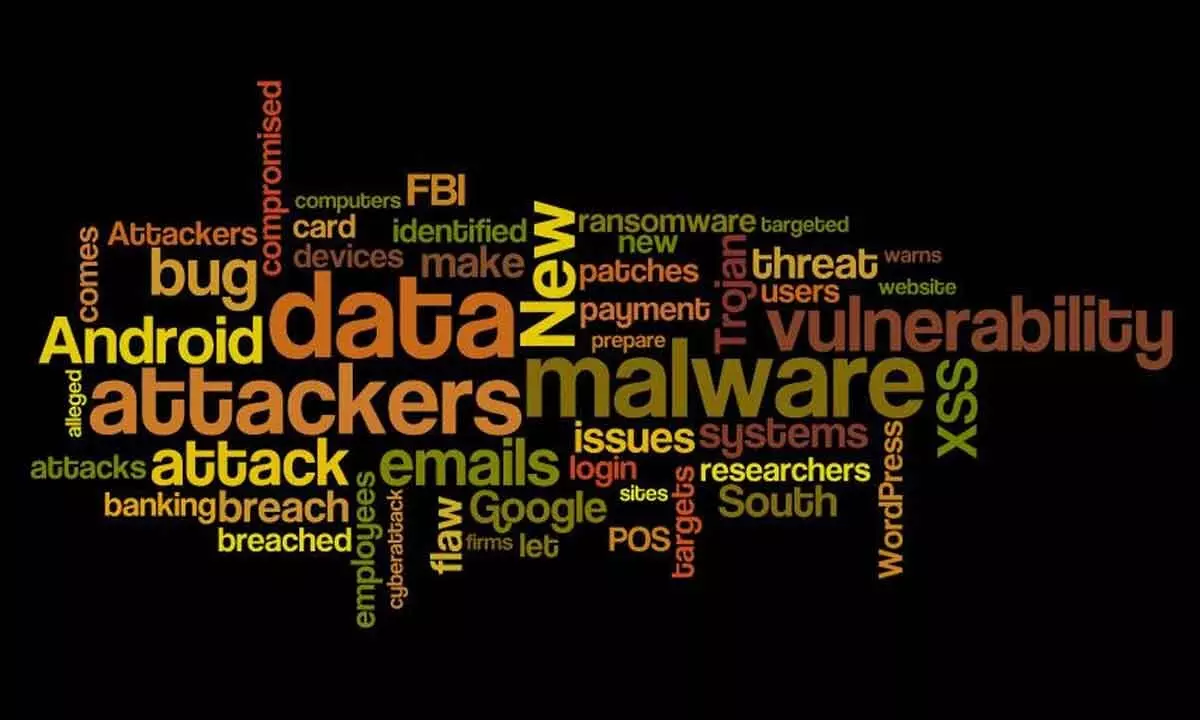Banks have to evolve a foolproof streamlined mechanism to checkmate cybercrimes
Indian banks have been recapitalized and the burden of NPAs has been reduced to significantlevels
image for illustrative purpose

Sporadic scams are still occurring, digital banking frauds are on the rise, and the network of cybercriminals in banking is constantly expanding. A foolproof control over this issue has not yet been established
The re-election of the Narendra Modi government at the Centre has raised hopes of concrete steps towards making the banking sector more transparent and efficient. In recent years, Indian banks have faced more ups and downs than perhaps any other country's banks.
Indian banks have been plagued by numerous scams, loan defaults, frauds and a risein non-performing assets (NPAs), wrong policies of loan waivers, which have led to further sinking or huge losses. While previous central governments took some steps to address these issues, their half-hearted implementation did not yield the desired results.
Fortunately, the Modi government took swift action to address the irregularities in the banking sector, leading to a gradual improvement in the banks' condition. Many banks are not only recovering from losses and moving towards profits, but also bringing scams under control. Many fraudsters' assets have been seized towards recoveryof loans, banks have been recapitalized, and the burden of NPAs has been significantly reduced.
Isn't it a positive situation that NPAs, which were 12.47% between 2013 and 2017, have gradually reduced to 3.2% in September 2023, even though the government's recapitalization of banks played a crucial role in this reduction? The question now is whether this current state of improvement will continue into the future or will the adage ‘the fool returns home’ prove true?
Indian banks are witnesses to the fact that they have been sinking or suffering huge losses both before and after independence. This turbulent state compels us to ponder that until the reform process continues for a long time, a permanent solution to the problem is not possible.
Senior writer Shri Pal Jain’s latest book "Bharatiya Bankon Ka BadaltaChehra" (The changing face of Indian banks), analyses various aspects in detail. It provides a detailed account of scams, mega-fraudsters, fraudulent tricks, cybercrime in banking, the rise and fall of Yes Bank and the web of NPAs, both before and after independence. Additionally, it critically discusses the echoes of bank privatization, the economics of agricultural loan waivers, demonetization, Jan Dhan scheme, autonomy of Reserve Bank of India (RBI) and the increasing popularity and risks of digital banking, among others.
After independence, both private and public banks existed in the country, but numerous scams and failures occurred within them. Nonetheless, public banks remained a key driver of economic growth and business expansion. The private banks generally did not even open accounts of ordinary people.
The nationalization of banks in July 1969 led to increased access to banks for the general public. During this period, many banks merged, which led to some positive outcomes.
However, gradually, corruption, bribery, and political interference in public banks led to the issuance of huge loans to genuine and fake companies, many of which went unrecoverable or partially recoverable. This resulted in massive losses for both public and private banks.
In the early 1990s, liberalization policies were adopted, and shortly later private banks like HDFC, ICICI Bank and Yes Bank became popular due to their use of modern technology (credit operations, debit operations, fast clearing of checks, insurance, mutual fund opening).
The new products, schemes, and modern technology of private banks posed stiff competition to public banks. This forced public and other private banks to adopt new products, schemes, and modern technology. As a result, some improvement in the condition of public and private banks was recorded, but the wave of liberalization also saw a continuation of scams, bribery, corruption, and political interference.
Setbacks during the period came in the form of theHarshad Mehta andKetan Parekh scams, and the sinking of banks like Global Trust.
In the first term of the Modi government, a major crisis arose due to scams in PNB Bank, PMC Bank and other cooperative banks, Yes Bank, and the flight of mega-fraudsters to foreign countries. The burden of NPAs of banks reached record levels. In this context, the commendable initiative of merging smaller banks with large public banks to reduce their number was taken. Meanwhile, India's trade continued to grow rapidly, maintaining liquidity in banks. The Reserve Bank's supervision was made more robust. Demonetization, the Jan Dhan scheme, housing schemes, and significant boosts were given to Atmanirbhar Bharat, manufacturing, and other sectors. In the meantime, the Codid-19 pandemic struck, giving a severe blow to the economy. However, within a few months, the Modi government made concrete efforts to regain control over the economic front. During the pandemic, transactions via digital banking increased significantly, breaking all records worldwide. UPI is making its mark not only in India but also abroad.
Despite these, the health of banks cannot be considered worry-free.
Sporadic bank scams are still occurring, digital banking frauds are on the rise, and the network of cybercriminals in banking is constantly expanding. This is causing serious damage not only to banks but also to account holders. A foolproof control over this issue has not yet been established.
Shri Pal Jain correctly stated in the conclusion of his book, "Currently, most banks are moving towards profits. The Modi government has turned problems and challenges into opportunities, in which the key contribution of the Reserve Bank's supervision can be seen."
However, until corruption, bribery, lending to companies or individuals based on fake documents, and infiltration of cybercriminals into banking are stopped, the dream of bank strengthening and foolproof security will remain half-fulfilled.
(The author is Delhi-based senior journalist and writer. He is author of Gandhi's Delhi which has brought to the forth many hidden facts about Mahatma Gandhi)

